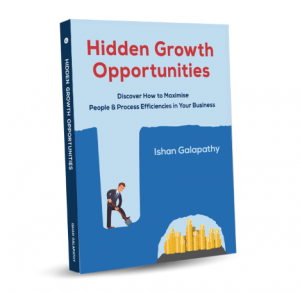A few years ago, as I was speaking with the production scheduler of a manufacturing client, something caught my attention – printed production paperwork on her desk with varying numbers of “URGENT” stamps on them. Some had one URGENT stamp, some had two and a few had even three! She explained that the number of stamps reflected the level of urgency. She then got off her chair and ran into the factory with a set of production orders saying, “I need to get this to the supervisor. This is super urgent”.
While dealing with urgent production orders is not uncommon for manufacturing schedulers, this is becoming a common scenario for many others as well. So, here are a few tactics to help you manage your competing priorities.
Borrow time: You’ve been given a deadline by the other party. Check against the other individual’s needs and borrow time where possible. This reminds me of the purchasing officer in my first job who had a message printed on a small picture frame. It read, “Failing to plan your part, does not create an urgency on my part”. So, discuss with stakeholders and push back on timelines.
Fold time: Do YOU have to do this task? Can you delegate or give quick instructions to a colleague, so they could do it? At least part of it? Get them started on some parts of the task while you work on something else. Ask for help – people are often open to helping, if you ask politely.
Drop one: Explore if you can shorten the task list. Write down the tasks that are currently on your plate and ask against each one, “What if this task doesn’t get done and what would be the worst outcome?” Drop off the one that seems / feels like the one with least consequences. Remember, not doing it is always faster than doing something.
Pick one: Find the task that is of most importance. Pretend a high-pressure scenario that you are forced to work on one task only. Which one would that be? Don’t focus on any other tasks until you’ve got this one under control.
80% Rule: This one is for perfectionists. Stop trying to complete tasks to 100%, 80% is good enough. You may have heard of the Pareto Principle – 80% of your results are driven by 20% of your activities. A study conducted by J.S. Perry and K.A Smith, was published in the Journal of Management in 2010, titled “The Power of 80/20 Thinking for Managers”. The study suggests that using the 80/20 rule can lead to increased productivity, job satisfaction, and better time management practices. So, stop polishing the diamond.
50% Rule: This is one of my personal favourites. If you’re over the 50% mark of a task, then do not pause it, if something else becomes more urgent. The time needed to pick-up that task again, later on, and to get to your original peak performance level is greater than, the time needed to just pushing through to the 80% mark.
Sprints: I know two Olympic athletes; one of them is Dan Collins. One of the gold nuggets that Dan once shared with me was how to get peak performance. Super athletes like Dan push their bodies 110% for a short time, but then they completely switch off. Like the music that’s created with the silence in between the notes, your best work can be created with short sprints and breaks. The Pomodoro technique states it’s best to focus hard for 25min followed by a 5min break.
Perspective: When you get those 5min breaks, grab a tea/coffee or go for walk. Get away from the desk. Look into the horizon. Explore the things on your plate from a different perspective, what are the must do, should do and want to do tasks on your list.
In the words of my one-time mentor Dermot Crowly, the productivity thought leader and author of three great books titled Smart Work, Smart Teams and his latest titled URGENT, sums this concept really well. He says, “Create a sense of urgency, not senseless urgency.”





